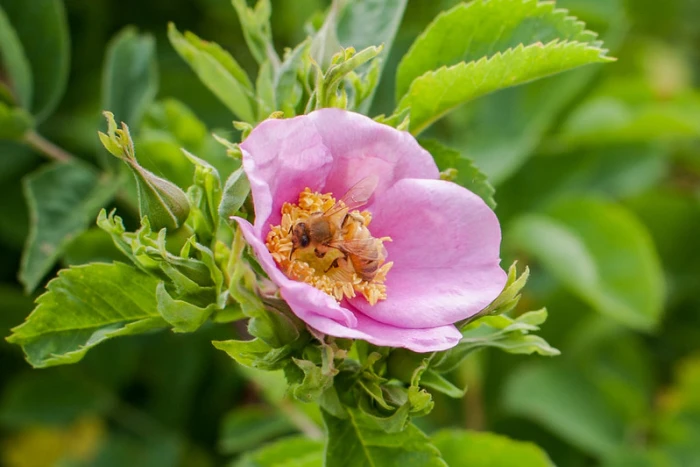California Wildrose
(Rosa californica)
California Wildrose (Rosa californica)
/
/

Kat Grigg
CC BY 2.0






















































Estimated Native Range
Climate Requirements for Whittier, California
| This Plant | Your Site | Plant Suitability for Your Location | ||
|---|---|---|---|---|
| • Precipitation | 5" - 77" | 17" | Your precipitation may be insufficient for this plant. Irrigate N" / year. | Irrigate N" / year |
| • High Temp. | 63°F - 100°F | 88°F | Your summer temperatures are normal for this plant. | Excellent |
| • Low Temp. | 7°F - 48°F | 44°F | Your winter temperatures are normal for this plant | Excellent |
Summary
The California Wildrose is valued for its drought tolerance once established, making it suitable for water-wise gardens. It thrives in full sun to part shade and adapts to a variety of soil types, though it prefers well-drained soils. This plant is ideal for naturalistic plantings, erosion control on slopes, and as part of a wildlife-friendly garden. It attracts pollinators with its flowers and birds with its hips. Gardeners should be aware that it can spread via suckers, potentially becoming aggressive in favorable conditions. It is also susceptible to common rose diseases such as rust and powdery mildew.CC BY-SA 4.0
Plant Description
- Plant Type: Shrub
- Height: 1-3 feet
- Width: 2-8 feet
- Growth Rate: Rapid
- Flower Color: Pink
- Flowering Season: Spring, Summer
- Leaf Retention: Deciduous
Growth Requirements
- Sun: Full Sun, Part Shade
- Water: Medium
- Drainage: Medium
Common Uses
Bee Garden, Bird Garden, Butterfly Garden, Drought Tolerant, Edible*Disclaimer: Easyscape's listed plant edibility is for informational use. Always verify the safety and proper identification of any plant before consumption., Fire Resistant, Fragrant, Groundcover, Showy Flowers, Water Garden
Natural Habitat
Native to chaparral, coastal sage scrub, and riparian areas in California, Oregon, and Baja California, Mexico
Other Names
Common Names: California Rose , Kalifornische Rose , Kalifornisk Ros
Scientific Names: Rosa californica , Rosa aldersonii , Rosa californica f. plena , Rosa breweri , Rosa californica var. chamissoniana , Rosa californica var. glabra , Rosa californica var. glandulosa , Rosa californica var. petersiana , Rosa californica var. pubescens , Rosa fraxinifolia
GBIF Accepted Name: Rosa californica Cham. & Schltdl.